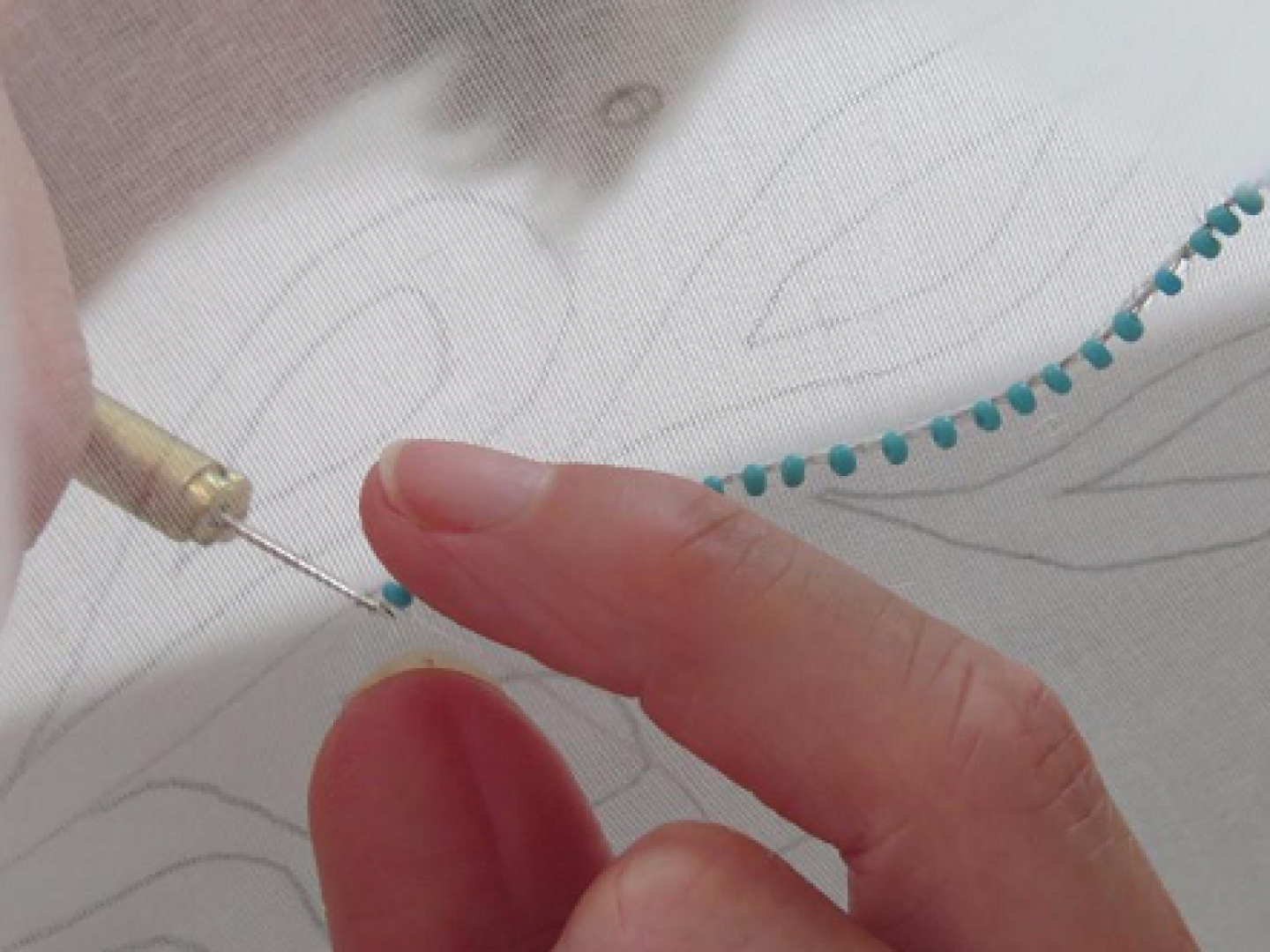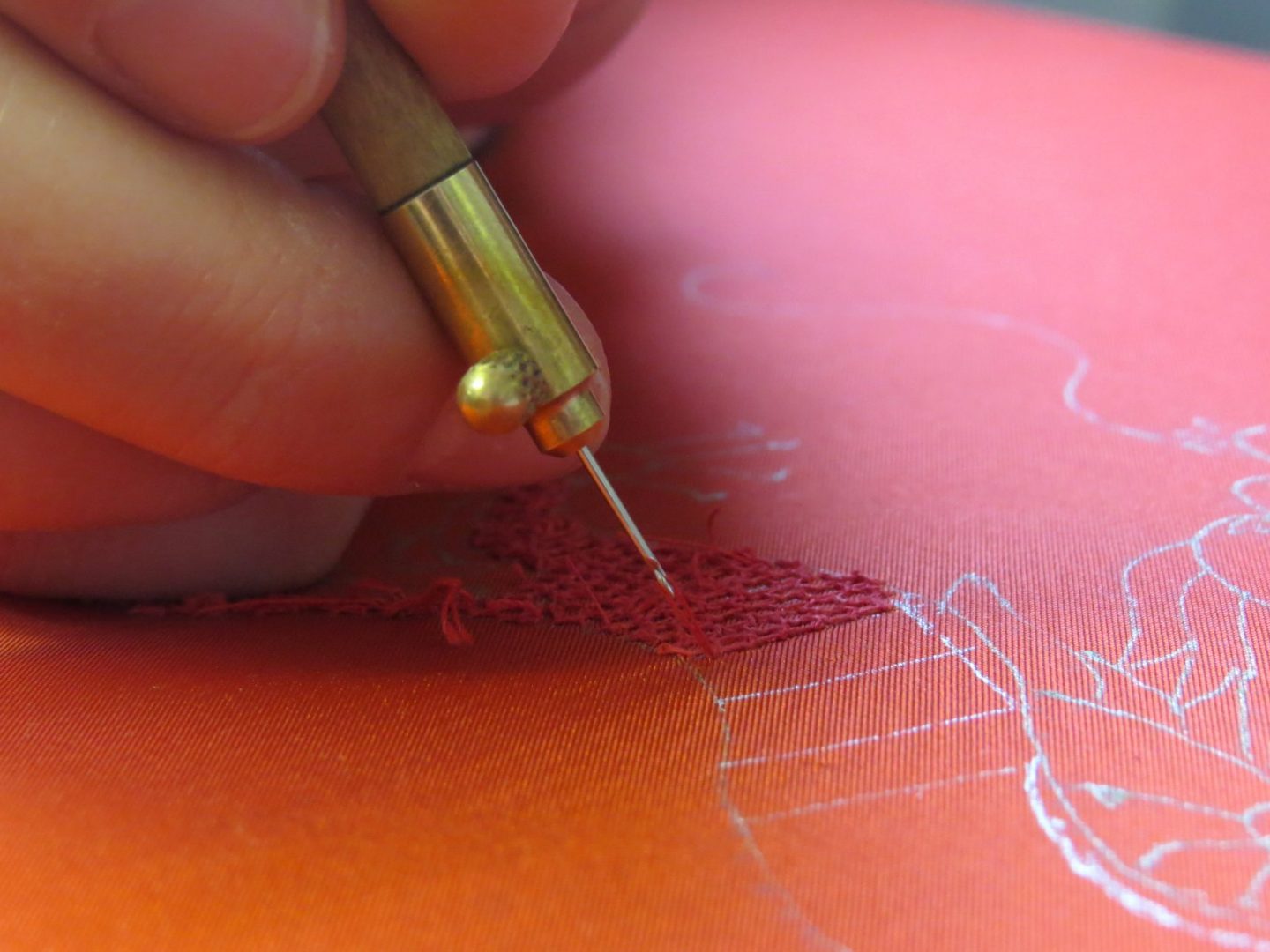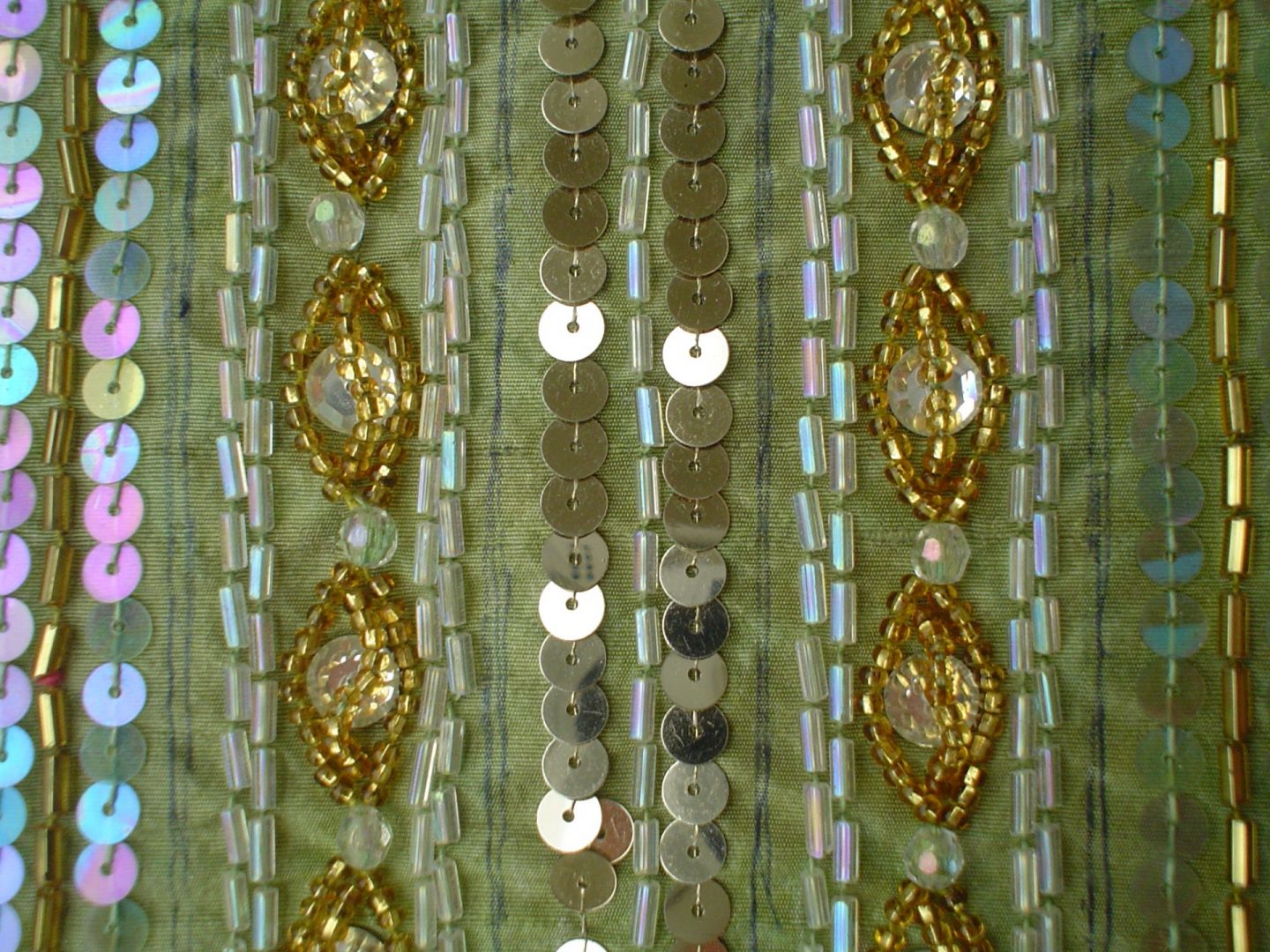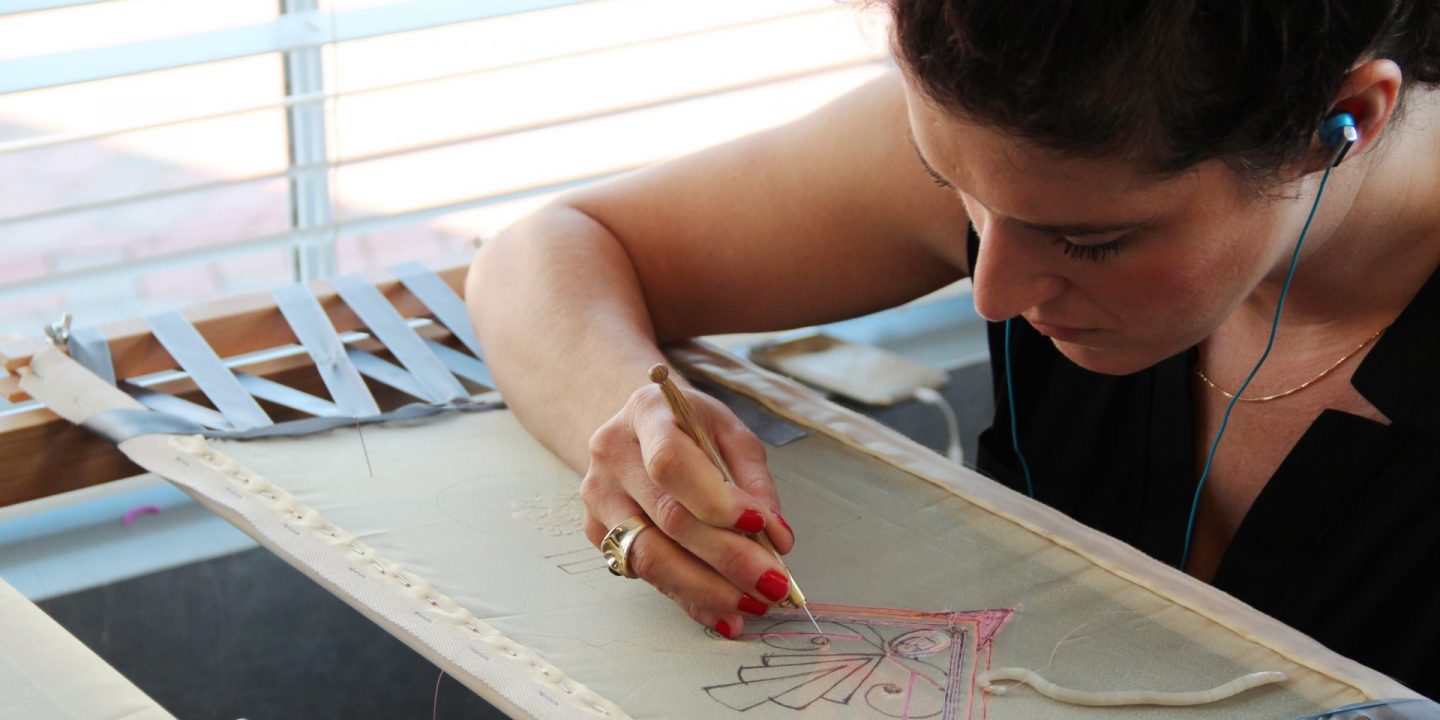

Most experts agree Tambour beading (or something very like it) originated in India in the seventeenth century. However, the technique as we know it now, was popularised in 18th century Europe as an embroidery technique featuring beads and sequins. The fabric that the embroiderer works on is often transparent and is pulled tight on the frame, like the surface of a drum. Which is where the name comes from; the word tambour is French for ‘drum’. By the start of the 20th century Tambour Beading was established as the ‘haute couture’ technique of choice by leading European couturiers.


The technique itself involves beads or sequins on a thread and a small hooked needle with a wooden handle. The sequins or beads are fixed one at a time on the underside of the fabric, while the embroiderer uses the hooked needle to create a chain stitch on the top of the fabric. The challenge is working on top and underneath the material at the same.
The technique is versatile, produces spectacular effects and is relatively speedy compared to other beading techniques. Popular in bridal couture and on catwalks, it’s a perfect way to elevate any design to jaw-dropping status.


London's oldest and most famous embroidery house run Tambour Beading workshop in the UK and USA
Read More
